What do you put in the bottom of a planter without drainage? Essential Tips for Successful Planting
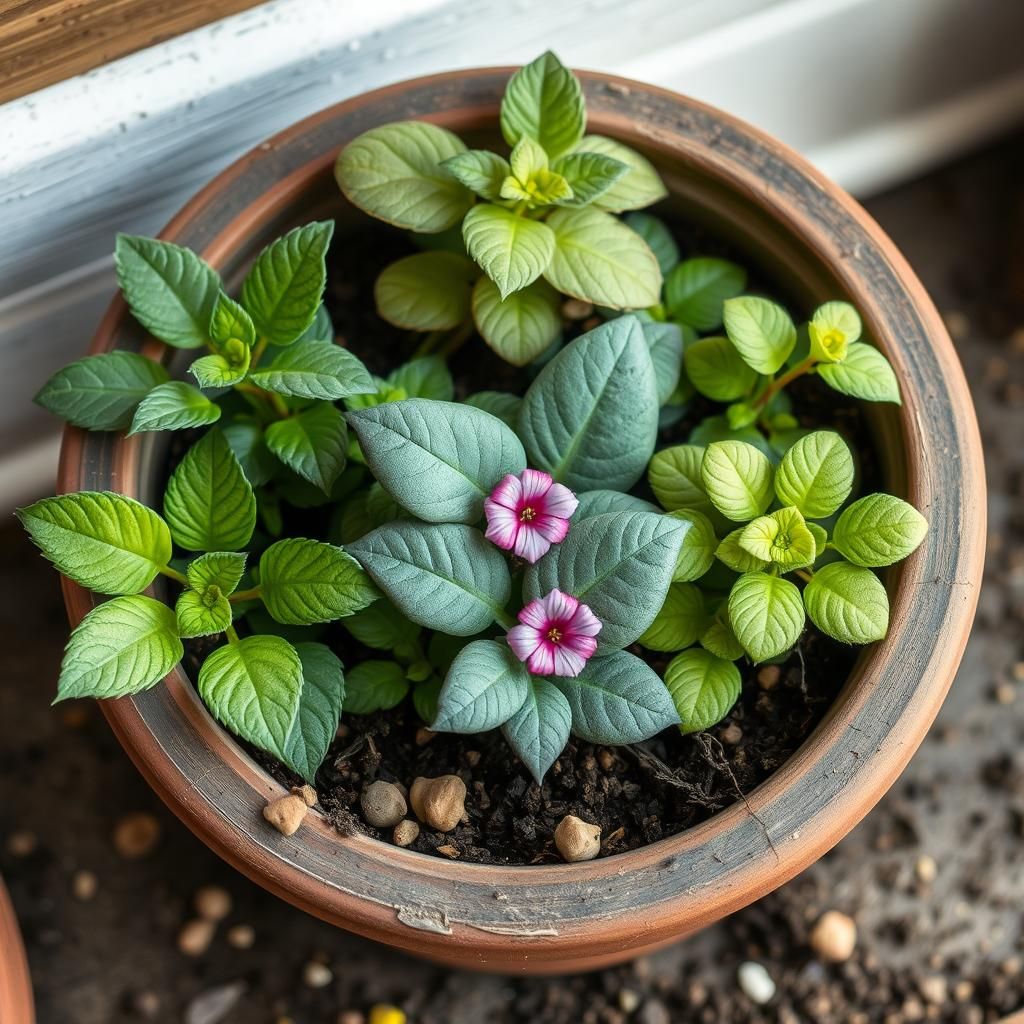
When planting in containers without drainage holes, it's crucial to understand how to manage excess water to avoid root rot and ensure healthy growth. Many gardeners face the challenge of maintaining proper moisture levels in these planters, leading to frustration and plant failure. This article provides essential tips on what to include at the bottom of a planter to improve drainage and promote a thriving environment for your plants. From choosing the right materials to layering techniques, discover how to create a well-balanced planting foundation that enhances both aesthetics and plant health.
What to Place at the Bottom of a Planter Without Drainage
When dealing with a planter that lacks drainage holes, it is essential to use materials that help to manage excess moisture and prevent root rot. One effective solution is to add a layer of rocks or gravel to the bottom, which allows for better water movement and helps to create a barrier between the soil and any standing water. Additionally, you can use landscape fabric or a coffee filter to prevent soil from washing into the gravel while still allowing for some drainage. Some gardeners also recommend using activated charcoal to absorb odors and maintain a healthier environment for your plants. Maintaining the right balance of moisture is crucial for the overall health of plants in containers without drainage.
Using Rocks or Gravel
Adding a layer of rocks or gravel is one of the most common methods to help with drainage in planters without holes. This material provides a foundation that allows excess water to slowly flow away from the plant roots, reducing the risk of overwatering and facilitating proper aeration of the soil.
Landscape Fabric as a Barrier
Landscape fabric can serve as an excellent barrier between the soil and the drainage layer of rocks or gravel. This prevents soil from mixing with the stones while still allowing water to pass through, effectively creating a filtration system that ensures moisture does not accumulate at the bottom of the planter.
Incorporating Activated Charcoal
Using activated charcoal at the bottom of a planter can help maintain a healthier environment for your plants. This material absorbs excess moisture and odors, acting as a natural filter that promotes better air quality and prevents the buildup of harmful pathogens that may arise in stagnant water.
Adding Perlite or Vermiculite
In addition to rocks and gravel, you can incorporate perlite or vermiculite as a lightweight, porous material in the bottom layer. These amendments help improve drainage and aeration within the soil while retaining just enough moisture for the plants to thrive without becoming waterlogged.
Using a Potting Mix with Good Moisture Control
Selecting the right potting mix is crucial when planting in a container without drainage. Opt for a mix designed for container gardening that includes materials like coconut coir or sphagnum moss, which can hold moisture while still allowing for adequate air circulation to the roots, helping to prevent root rot.
| Material | Benefits |
|---|---|
| Rocks/Gravel | Helps with drainage and aeration. |
| Landscape Fabric | Prevents soil from washing away while allowing moisture to pass. |
| Activated Charcoal | Absorbs odors and minimizes harmful pathogens. |
| Perlite/Vermiculite | Improves drainage and provides aeration to the soil. |
| Potting Mix | Holds moisture without becoming waterlogged. |
What to put in the bottom of a planter without drainage holes?
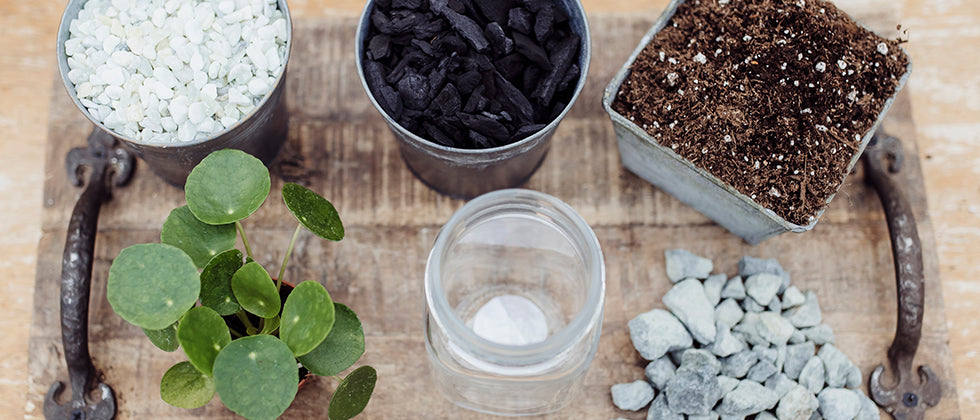
Placing the right materials at the bottom of a planter without drainage holes is crucial for maintaining the health of your plants. Without proper drainage, excess water can accumulate, leading to root rot and other issues. Here are some effective materials you can use.
Using Rocks or Gravel
Adding a layer of rocks or gravel can help improve drainage slightly in a planter without drainage holes. This method allows excess water to settle away from the roots.
- Weight: Rocks provide stability to large planters, preventing them from toppling over.
- Airflow: Gravel promotes airflow which can benefit root systems.
- Mulching: A layer of rocks on top of the soil can also help retain moisture and prevent the growth of weeds.
Charcoal for Absorption
Activated charcoal is highly recommended for planters without drainage holes as it can absorb excess moisture and limit odor.
- Absorption: Charcoal can absorb impurities and excess moisture, improving the soil's overall health.
- Odor Control: It helps to neutralize unpleasant odors that can develop in stagnant water.
- Microbial Health: Charcoal can promote beneficial microbial life in the soil, essential for plant health.
Use of Landscape Fabric
Placing landscape fabric at the bottom of the planter can prevent soil from leaking out while allowing excess water to escape.
See also: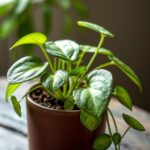
- Soil Retention: It keeps soil contained while allowing moisture to drain away.
- Weed Barrier: It can also act as a barrier against weeds that might grow from below.
- Reusable: Landscape fabric is durable and can be reused for future planting.
Diverse Soil Mixes
Utilizing a soil mix that includes perlite, vermiculite, or coconut coir can improve drainage within the planter, optimizing growing conditions.
- Perlite: Increases aeration and drainage in the soil mix.
- Vermiculite: Retains moisture while providing drainage, perfect for planters without holes.
- Coconut Coir: A sustainable alternative that retains moisture, preventing the substrate from becoming waterlogged.
Layering Technique
Creating a layered approach with different materials can effectively manage water retention and drainage issues.
- Bottom Layer: Start with larger materials like rocks for drainage.
- Middle Layer: Add activated charcoal to absorb excess moisture.
- Top Soil: Use a well-balanced potting mix to provide nutrients for plant growth.
What is the best thing to put in the bottom of a planter for drainage?

The best thing to put at the bottom of a planter for drainage is a combination of materials that will prevent soil from clogging drainage holes while allowing excess water to flow out effectively. Here are some commonly used materials:
1. Gravel or Pebbles: Small stones provide an excellent drainage layer since they create air pockets and promote water movement away from the soil.
2. Ceramic or Terracotta Pot Shards: Broken pieces of old pots can serve well as a barrier, allowing water to escape while preventing soil from washing away.
3. Landscape Fabric: This material acts as a filter that holds soil in while allowing water to pass through. It’s especially useful in planters with larger drainage holes.
4. Charcoal: Activated charcoal not only improves drainage but also helps to absorb excess moisture and prevent odors.
5. Perlite or Vermiculite: These lightweight materials improve soil aeration and drainage, making them beneficial for the bottom layers of a planter.
Gravel and Pebbles
Gravel and pebbles are among the most popular choices for creating a drainage layer in planters. Their size and shape allow for easy water movement and help prevent soil compaction.
- Promotes air circulation around the roots.
- Prevents soil from washing away through drainage holes.
- Available in various sizes for different planting needs.
Broken Pot Shards
Using ceramic or terracotta shards at the bottom of your planter can be an excellent way to provide drainage without losing valuable soil. These shards help create a stable base.
- Acts as a physical barrier to keep soil in place.
- Improves drainage by creating space for water to escape.
- Recycles old pots, making it an environmentally friendly option.
Landscape Fabric
Landscape fabric serves as a filter, allowing water to flow out while keeping soil intact. This versatile material is particularly beneficial for planters with larger drainage holes.
- Reduces the risk of soil washing away during watering.
- Facilitates effective drainage while holding particles in.
- Durable and long-lasting, making it a practical choice.
Activated Charcoal
Activated charcoal is not only beneficial for drainage but also helps to maintain a fresh environment in planters. It can absorb excess moisture and combat unpleasant odors.
- Improves overall soil health by maintaining proper moisture levels.
- Helps with odor control in closed planters.
- Lightweight and easy to incorporate into various planting setups.
Perlite and Vermiculite
Both perlite and vermiculite are lightweight materials that enhance drainage and aeration in the soil. They can be particularly useful for potting mixes.
- Creates voids in the soil, allowing excess water to escape.
- Improves drainage without adding significant weight to the planter.
- Effectively retains some moisture, aiding in plant health.
Should I put rocks at the bottom of my planter?
Placing rocks at the bottom of a planter is a common practice among gardeners, but whether or not you should do this depends on several factors. While rocks can play a role in drainage, their effectiveness and necessity can be debated. Here are the key considerations:
See also: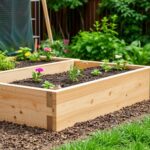
1. Drainage Improvement: Rocks can help to improve drainage within pots that may otherwise retain too much moisture. However, they can also create a false sense of security, leading to overwatering.
2. Soil Compaction Prevention: Using rocks can help prevent soil from compacting too much, allowing roots to breathe more easily. However, if you use too many rocks, they can impede root growth.
3. Weight Balance: Adding rocks can also provide some stability to larger planters, preventing them from tipping over. Keep in mind, though, that excessive weight can make planter movements more difficult.
4. Layering: It's important to layer your materials correctly. A combination of small stones and a good quality potting mix could be more beneficial than using rocks alone.
5. Plant Type Consideration: Certain plants, especially those that prefer drier conditions, may benefit from increased drainage, making the addition of rocks sensible. However, tropical plants might thrive better in a uniformly moist substrate.
Understanding the Role of Drainage
The role of drainage in a planter is fundamental to the health of your plants. Proper drainage ensures that excess water does not collect at the bottom, which could lead to root rot and other water-related issues. Rocks can help create a gap between the soil and the bottom of the planter, theoretically allowing water to escape. However, it’s vital to understand that simply adding rocks may not solve drainage issues if the planter lacks drainage holes.
- Drainage Holes are Essential: Make sure your planter has adequate drainage holes.
- Water Retention: Rocks can retain water, which might be a downside for certain plants.
- Soil vs. Rocks: Soil is essential for nutrient uptake, whereas rocks provide limited benefits.
Soil Composition and Plant Health
The composition of the soil directly impacts plant health. When rocks are added to the bottom of a planter, they can create a false bottom that traps water rather than facilitating drainage. It is crucial to have a good quality potting mix that promotes airflow and moisture retention without becoming waterlogged.
- Choose the Right Soil: Use a well-aerated potting mix.
- Monitoring Moisture: Regularly check the moisture level to avoid overwatering.
- Adjust Based on Plant Type: Different plants have different soil needs.
Potential Issues with Using Rocks
While using rocks may seem beneficial, there are potential issues that can arise from this practice. One such issue is the creation of a layer that can impede effective drainage. This could lead to a buildup of water in some areas, negatively affecting root health. Being mindful of how rocks interact with soil can help you avoid common pitfalls.
- False Security: Rocks might provide a false sense of security regarding drainage.
- Soil Loss: Soil may erode through larger gaps, decreasing the quality of the growing medium.
- Root Growth: Rocks can restrict root spread if not managed correctly.
Alternatives to Using Rocks
If you are concerned about drainage but unsure whether rocks are a good choice, there are alternatives that can provide the same benefits without potential drawbacks. Materials like charcoal, clay pellets, or even broken pottery can offer effective drainage while promoting a healthier root environment.
- Charcoal: Helps to absorb excess moisture and odors.
- Clay Pellets: Lightweight and provide excellent drainage.
- Broken Pottery: Provides a more stable foundation and maintains drainage.
Best Practices for Planter Maintenance
Regardless of whether you add rocks or not, understanding best practices for maintaining your planter is essential. Regular maintenance and monitoring of water levels and soil quality can lead to healthy plants and a thriving garden.
- Regular Water Checks: Make a habit of checking moisture levels.
- Soil Amendments: Amend the soil with organic matter to maintain nutrient content.
- Clean Drainage Holes: Regularly clear any debris to ensure constant drainage.
Questions from Our Readers
What materials can I use in the bottom of a planter without drainage?
To improve drainage in a planter without drainage holes, you can use materials such as pebbles, gravel, or aquarium rocks. These materials help create a layer of space that allows excess water to settle away from the plant roots, reducing the risk of root rot.
How much material should I put in the bottom of the planter?
A good rule of thumb is to use about 1 to 2 inches of your chosen material at the bottom of the planter. This layer thickness can help facilitate the movement of water without taking up too much space that your plant might need for soil and roots.
See also: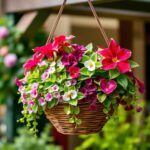
Do I need to cover the drainage material with soil?
Yes, it is recommended to cover the drainage material with a layer of soil to ensure that the plant roots can grow in a nutrient-rich environment and access moisture from the soil while still allowing excess water to flow beneath.
Can I use other alternatives instead of gravel or rocks?
Absolutely, you can utilize materials like wood chips, soda bottles, or even styrofoam peanuts. These options can help create air pockets for drainage and lightweight the planter, but ensure they are natural and won’t leach harmful chemicals into the soil.

If you want to read more articles like What do you put in the bottom of a planter without drainage? Essential Tips for Successful Planting, we recommend you check out our Planter category.
Leave a Reply
Related Articles